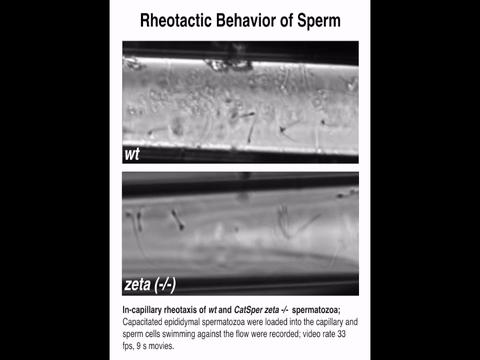Researchers describe how sperm can lose their way

Sperm tails are actually complex propellant and navigational devices that help push them through fluids and navigate around complex terrain of the female oviduct. Now researchers at Yale and Harvard Universities have identified a key component of this navigational system which, when disabled, greatly reduces male fertility.
The team examined the role of one particular subunit of the CatSper ion channel complex that line the flagella, or sperm tails, and help direct sperm on their journey. Knocking out this single gene in mice disrupted the arrangement of the ion channel complex and reduced ability of sperm to navigate, the researchers report the week of Feb. 22 in the journal eLife.
The findings could serve as basis of treatment for male infertility and alternately, provide a target for the development of male contraceptives, said Yale's Jean-Ju Chung, assistant professor of cellular & molecular physiology and lead author of the research.
More information: Jean-Ju Chung et al. CatSperζ regulates the structural continuity of sperm Casignaling domains and is required for normal fertility, eLife (2017). DOI: 10.7554/eLife.23082
Journal information: eLife
Provided by Yale University


















